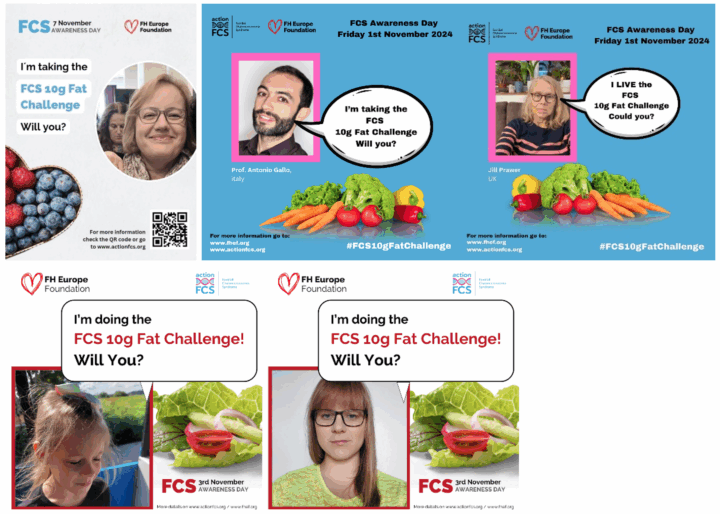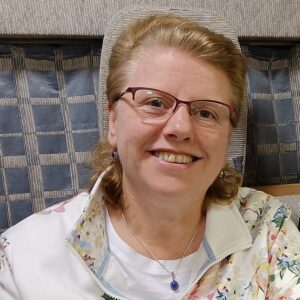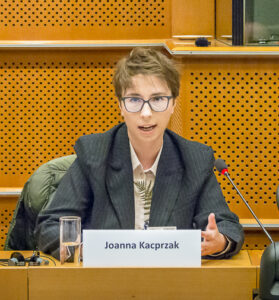The World Health Summit 2025 delivered a clear message: global health systems are under pressure because we treat disease too late, not because prevention is impossible. For cardiovascular disease (CVD) and inherited lipid disorders, the summit’s conclusions strongly reinforce the need for earlier detection, stronger primary care, and policies that support long-term prevention.
Speakers across sessions highlighted overwhelming evidence: prevention delivers major health and economic returns, yet remains chronically underfunded. Early screening for cholesterol, hypertension, and inherited lipid disorders can dramatically reduce CVD risk and relieve health system pressure.
For our community, this means pushing for national adoption of family-based and genetic screening, and integrating lipid testing into routine preventive care.
UNICEF, WHO, and others stressed that lifelong cardiovascular risk is shaped early. Diet, physical activity, air quality, and safe environments influence heart and metabolic health long before adulthood.
This reinforces the importance of early diagnosis of inherited lipid disorders like FH, alongside child- and family-focused prevention strategies.
From liver health to cardiovascular disease, the summit highlighted a shift toward precision prevention — using genetics, biomarkers, imaging, and AI to identify risk early and act proactively.
For inherited lipid disorders, this approach is already central: early identification, monitoring across the life course, and tailored interventions for families.
The call to strengthen primary healthcare was consistent across WHS. Routine checks for blood pressure, cholesterol, and metabolic risk—supported by digital tools—are essential to reducing premature CVD deaths.
For lipid disorder communities, primary care is key to early detection and continuous management
The upcoming EU Cardiovascular Health Plan puts prevention and early detection at the centre of European policy. Its emphasis on “knowing your numbers,” digital tools, and routine checks aligns directly with the needs of people living with FH, Lp(a), and related conditions.
WHS speakers highlighted persistent gaps in women’s cardiovascular care: later diagnoses, misinterpreted symptoms, and limited participation in clinical research.
For inherited lipid disorders, sex-specific risk and care—especially during pregnancy and menopause—must become standard practice.
Climate, air pollution, food systems, and inequality were recognised as major contributors to cardiovascular and metabolic diseases. Effective prevention requires whole-of-society action, from healthier cities to stronger health literacy, not just clinical interventions.
WHS 2025 underscored that sustainable health systems depend on prevention, early detection, and equitable access to care. For the cardiovascular and inherited lipid disorders community, the path forward is clear:
If prevention becomes the backbone of policy and practice, we can change the trajectory of cardiovascular disease and protect future generations from preventable risks.
Read the full report here.
Every year, on the first Friday of November, our global community comes together to mark FCS Awareness Day, a day of solidarity, awareness raising and shared stories. It is a moment to shine a light on Familial Chylomicronaemia Syndrome (FCS), an ultra-rare familial lipid /metabolic disorder that profoundly shapes the lives of those who live with it. For many, FCS is a journey lived quietly, under the radar, in the spaces between everyday meals and everyday conversations. But today, we choose to bring it into the light.
FCS is a genetic disorder in which the enzyme responsible for clearing fat-rich particles (chylomicrons) from the bloodstream — lipoprotein lipase (LPL) — is missing or does not work properly. As a result, triglyceride levels can soar, chylomicrons build up, and the consequences can be severe: recurrent acute pancreatitis, visible physical signs such as milky blood, fatty skin deposits, or lipemia in the retina, and a daily life marked by strict dietary vigilance, fatigue, digestive discomfort, and social isolation. Because FCS affects perhaps only 1 to 10 people per million, and because its symptoms overlap with more common disorders, it often goes unrecognised or misdiagnosed.
(For a full description, visit our FCS Awareness Day page at FHEF.)
Why We Celebrate FCS Awareness Day
Why dedicate a day to FCS? Because someone living with this rare condition often feels invisible. They eat with care when others eat freely; they monitor their body while others assume they’re “fine.” The world rarely sees the constant vigilance, the fear of pancreatitis, or the exhaustion of managing a strict low-fat diet, usually less than twenty to ten grams of fat a day. Any fat that is.
FCS Awareness Day exists to change that. It’s about recognition, connection, research, and resilience. It’s about helping clinicians, dietitians, and families recognise the signs sooner. It’s about connecting people who might otherwise never meet someone who understands. It’s about encouraging research and dialogue so that one day better treatments, or even a cure, will exist. And it’s about honouring the extraordinary courage of those who live with FCS every single day.
Building a Global Movement
Over the years, our international community has been working to transform awareness into advocacy. Through creative social-media campaigns, educational webinars, sessions at scientific congresses, or research projects, and publications, we have been trying to help the world understand what FCS means in daily life.
In collaboration with Action FCS we have been promoting the “FCS 10 Grams Fat Challenge”, encouraging people everywhere to try living within a ten-gram daily fat limit to grasp the reality of the condition. We have built bridges across continents — joining hands with Action FCS in the UK, The FCS Foundation and the National Pancreas Foundation in the USA, and newly discovered patient groups in Spain and Canada. Together, we hope to form a connected global voice for recognition, research, and respect.
FCS 10 grams Fat Challenge over the years

Voices of Advocacy: Our FCS Ambassadors
This year, our FCS Ambassadors are once again carrying that message worldwide.
Earlier in September, Teevi from Estonia shared her moving story of caring for a child with FCS at the European Parliament in Brussels, during our event ““Cardiovascular Prevention as the Cornerstone of a Competitive Europe – Scaling Up Lipid Screening to Secure Next Generations”. Her testimony brought the reality of life with FCS directly to European decision-makers, reminding them that behind every policy or research milestone stands a family navigating the daily challenges of a rare disease. Teevi also supported the European Medicine Agency (EMA) in reviewing a patient information leaflet for the newly approved therapy for FCS as an FHEF caregiver expert.
Read more about the Parliament event →
In the Netherlands, Margot represented our community at the World Orphan Drug Congress (WODC) in Amsterdam, raising awareness from the FHEF booth and engaging with policy leaders, researchers, and fellow advocates. And at the same event our Team spoke in a dedicated session about precision medicine in the context of FCS and HoFH. This comes at the time when new therapies are being developed, with new clinical trials and therapies slowly being approved in Europe and the USA. For more information check the
Discover the WODC post event report here
In Scotland, Helga will take the stage at the 2025 Global Forum: Creating Health Through Understanding and Personalising Value, sharing her lived experience of FCS and helping to reimagine how rare diseases are valued in healthcare discussions.
Discover the event program here.
And in Washington DC (USA), Scott will speak for the first time at the Cardiovascular Clinical Trials (CVCT) Forum, connecting with U.S. regulators, leading trialists and industry to ensure that the FCS community is heard within the heart of global health policy. Then, inspired by the Ambassador Programme, he plans to visit his national policymakers based in the capital city. Bravo Scott!
Check out the CVCT Forum programme here.
And in exactly one week, the Ambassador will get a chance to meet in person again at the FH Europe Foundation Annual Network Meeting 2025 in Zagreb.
These actions and stories of lived experience which you can find on our website are part of a bigger tapestry, a movement that blends lived experience with leadership, transforming personal challenges into collective progress.
From Awareness to Action
Awareness is the first step, but it must lead to action. We invite everyone — individuals, families, healthcare professionals, life sciences representatives and health policy makers — to take part in this journey.
Visit our dedicated page at FHEF – FCS Awareness Day to explore and share resources: social-media graphics, “I Support FCS” frames, quote templates, virtual backgrounds, and personal stories. Share them widely using #FCSAwarenessDay and #FCS10gFatChallenge, start a conversation, ask questions, and help someone new discover what FCS is and why it matters.
Together, We Make FCS Visible
Today, and every first Friday of November, we don’t just raise awareness — we raise hope. From quiet invisibility to collective recognition, from isolation to connection, from challenge to change.
Thank you for standing with the global FCS community.
Together, we bring FCS from the shadows into the light.
October was a month of meaningful connection, elevated advocacy and cross-community momentum for the FH Europe Foundation. Representing patient voices at major conferences, launching awareness drives and advancing research equity, the organisation continued to advance cardiovascular prevention and rare lipid disorder care.
Catch up on the key highlights from the October 2025 edition of the Heart Beat newsletter:
FH Europe Foundation News:
Ambassador Programme News
Research & Community Engagement:
Network News & Partner News:
News from around the World:
Knowledge Hub:
Important Dates you don´t want to miss:
Today, as we observe World Mental Health Day, we’re reminded that mental wellbeing is just as vital as physical health, especially for those living with rare conditions. For individuals with Familial Chylomicronaemia Syndrome (FCS) and Homozygous Familial Hypercholesterolaemia (HoFH), the challenges go far beyond clinical symptoms. The emotional toll of isolation, anxiety, and being misunderstood can be overwhelming.
At FH Europe Foundation (FHEF), we recognise that people living with inherited lipid conditions often face additional emotional and psychological challenges. The unpredictability of symptoms, restricted lifestyles, and frequent misunderstandings in healthcare settings can lead to loneliness and frustration. Especially in times of crisis, maintaining continuity of care and ensuring access to mental health support are essential.
That’s why we continue to actively engage with key European initiatives, such as the EURORDIS Mental Health & Wellbeing Toolkit, to better understand and address the mental health needs of our community.
The Mental Health & Wellbeing Toolkit developed by EURORDIS – Rare Diseases Europe is a comprehensive, evidence-informed resource designed to help people living with rare and undiagnosed conditions take practical steps toward better emotional wellbeing. It brings together neutral, accessible, and empowering tools co-created with patients, psychologists, and mental health professionals.
The toolkit offers:
More than just a collection of resources, the toolkit represents a shift toward holistic care, recognizing that mental wellbeing is inseparable from overall health and quality of life. It empowers individuals to take small, meaningful actions that foster control, connection, and hope in their daily lives.
Our FH Europe Patient Ambassadors, Patsy Petrie and Elsie Evans, have played a vital role in amplifying the voice of the rare lipid community within the EURORDIS initiative. By participating in virtual meetings and contributing their lived experiences, they ensure that the toolkit reflects the unique psychosocial realities of those living with FCS, HoFH, and other rare lipid disorders.


They also help to bridge the gap between clinical care and emotional wellbeing, encouraging peers to explore the toolkit, test its tools, and share honest feedback. Their involvement helps shape future versions of the resource to make it even more relevant and accessible to the lipid disorder community.
Through their stories and advocacy, our Ambassadors remind us that while medical management is crucial, empathy, understanding, and emotional support are equally essential in improving patients’ overall wellbeing.
Living with a rare disease is often an invisible struggle. Behind every diagnosis lies a personal story of resilience and quiet strength—but also moments of fear, isolation, and emotional fatigue. Members of our community have shared some of their reflections:

At FH Europe Foundation, we remain committed to supporting not only the physical health but also the emotional and psychological resilience of those affected by inherited lipid disorders. By promoting initiatives like the EURORDIS Mental Health Toolkit, listening to our community, and empowering our Ambassadors, we aim to ensure that mental health care becomes an integral part of rare disease management—not an afterthought.
Learn more about the EURORDIS Mental Health & Wellbeing Toolkit here: https://mhtoolkit.eurordis.org